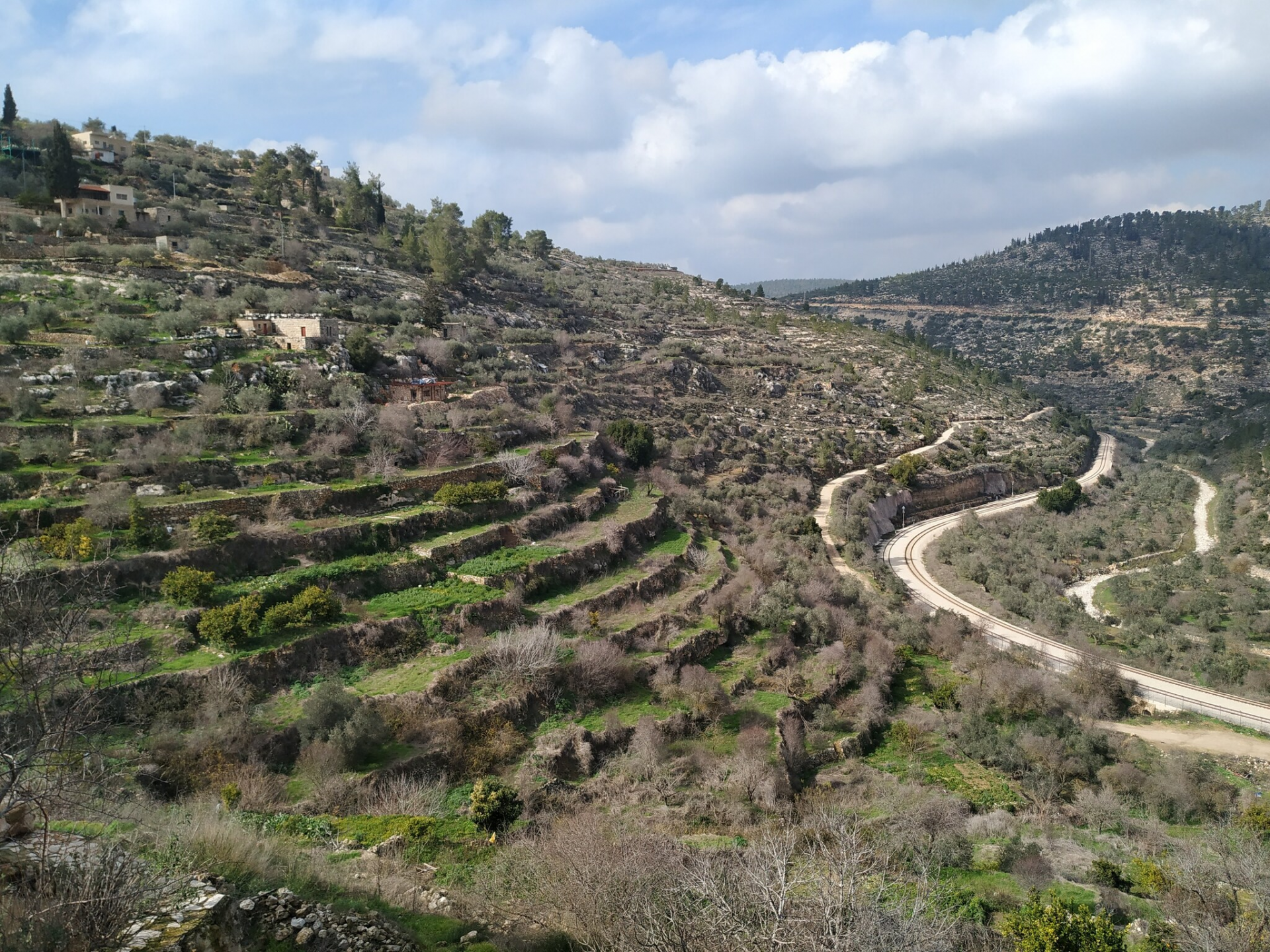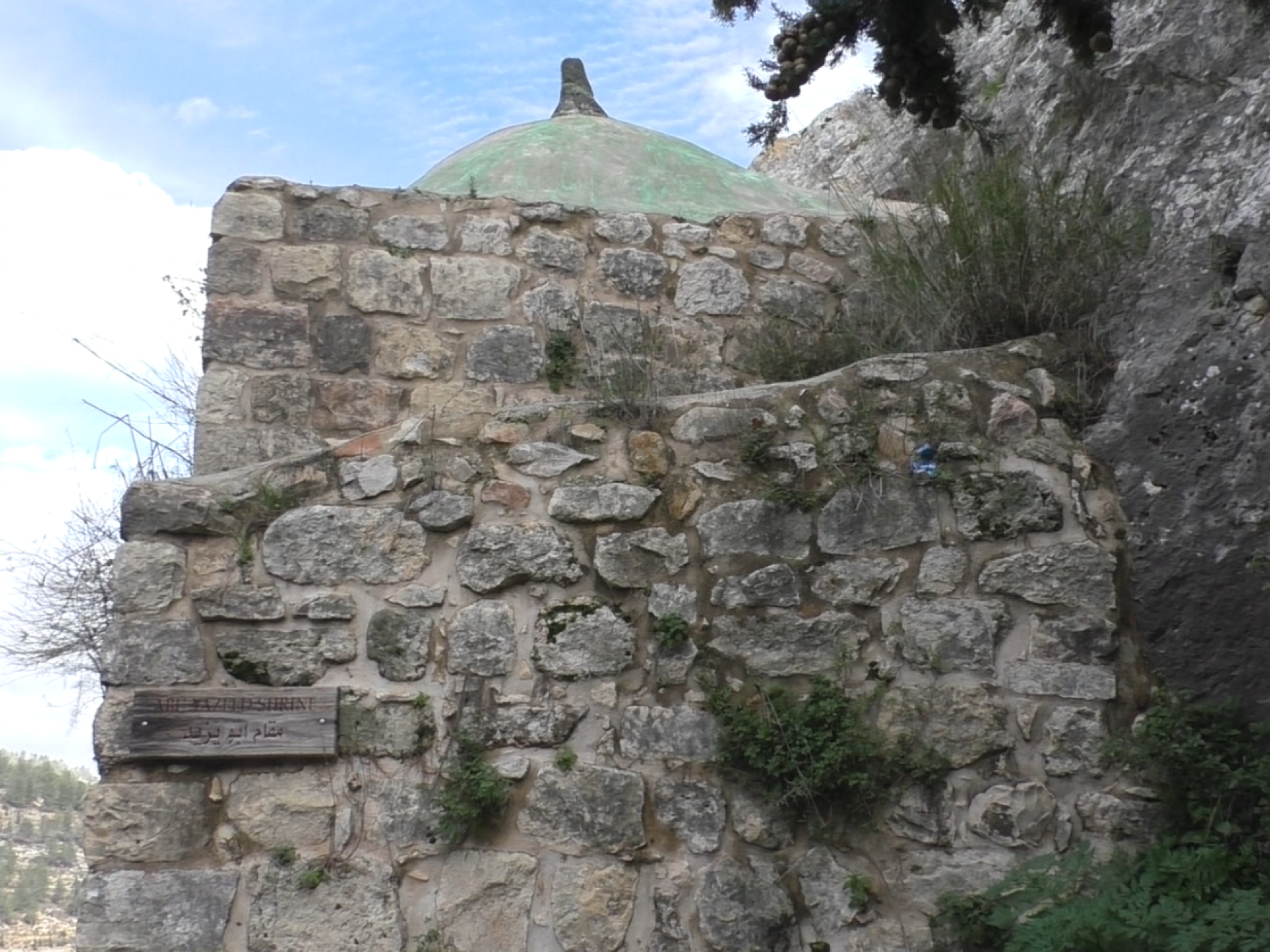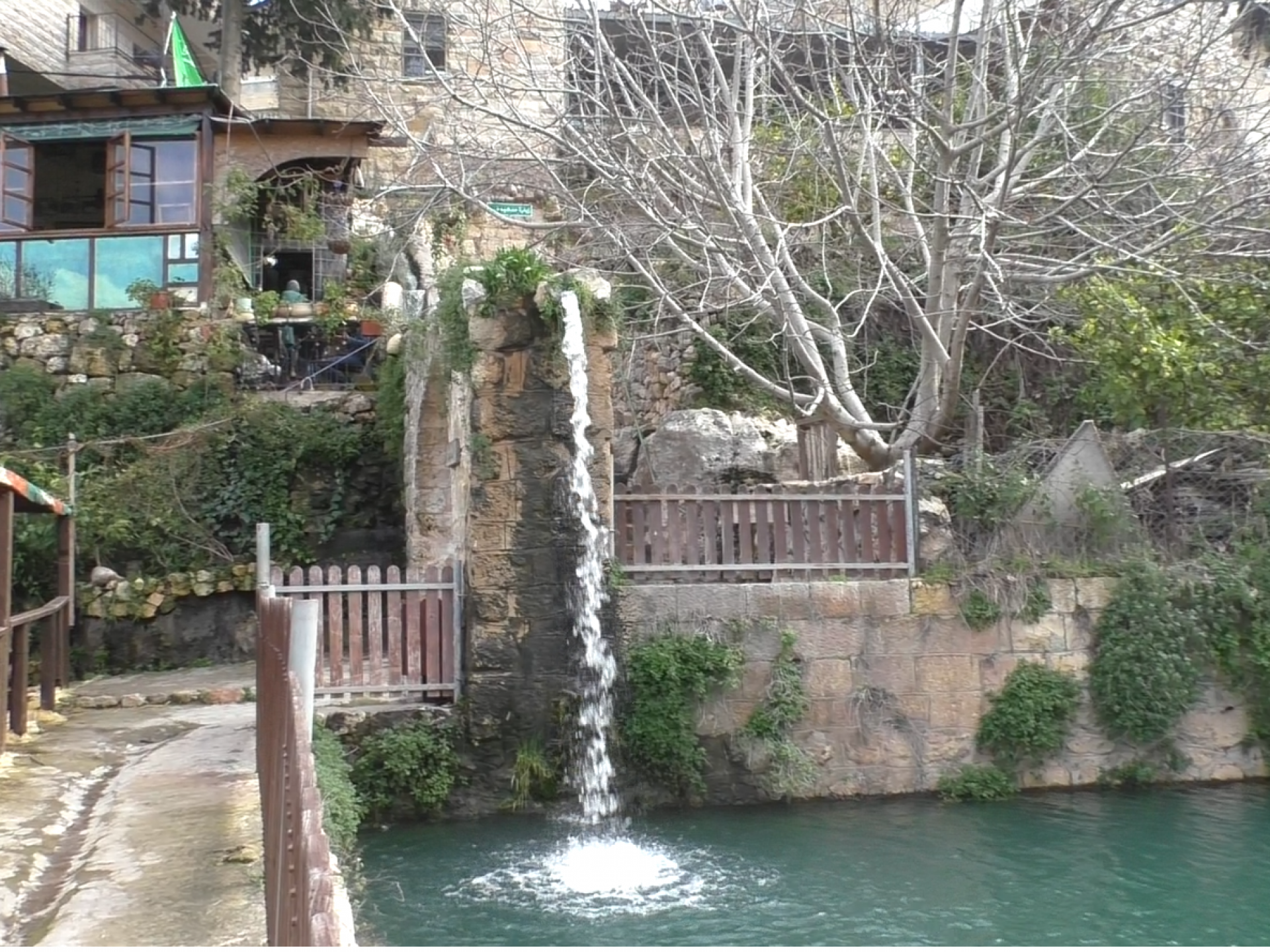Batir village – an optimistic visit; or: the future is already here
We were met by H., who was a major figure in the group that generated the terrace declaration as a UNESCO “world heritage site” and is still causing changes in the village.
The group was organized in 2007 and included engineers, architects, and town planners.
The challenge was the Separation Wall, which was about to be erected in Batir to protect the railway, as it were. This action would have robbed the village of its lands and included the terraces in the jurisdiction area of the State of Israel (including part of the Roman aqueduct that serves to irrigate Palestinian fields), maqam Abu Zayed and the schoolhouse, and would have enclosed the village with a concrete wall 30 meters high.
Since the PA made do with protest only, some of the villagers decided to act on their own behalf and to have professionals from elsewhere join them.
The group members relied on the Rhodes Agreements of 1949, that had approved the creation of a 200-yard buffer zone on the condition that the train passing there would remain safe. Before 1948 Batir had a train station, but with the new situation created on the ground, the train did pass the village but no longer stopped there. The villagers wished to continue tending their lands, and to this end, they were committed to protect the train and refrain from hostilities. Indeed, peace was kept there.
After 1948 the schoolhouse, founded in 1886, unusually became the only Palestinian school within Israel proper. Since the Oslo Accords that set up Areas A, B, and C in the Occupied Territories, nowadays, the school it is divided: 30% in Area B, and the rest in Area C, and it is subsidized and offering the syllabus of the Palestinian Ministry of Education.
The first obstacle was the villagers themselves. Since the first step was to survey the area, with maps and photos, the villagers had to be convinced that the surveyors were not working for the Jewish settler-colonists or the Israeli army. At the same time, the village elders were approached to have their stories documented: about the maqam (sacred Muslim site), the atmosphere, the still-active Roman cemetery, the terraces and their cultivation, irrigation, and farming methods, etc.
The organizers rejected suggestions of demonstrations, protests, and in general, opposed any bloodshed that would hasten the erection of the Separation Fence while they were doing all they could to prevent it.
After much preparation, they turned to UNESCO’s Melina Mercouri International Prize for Safeguarding and Management of Cultural Landscapes.
The second obstacle – At the time Palestine was not a UNESCO member, and to be a candidate for this award, it had to be. After discussions, the organizers applied through the Red Cross organization, recognized by UNESCO.
The third obstacle – that year, 103 projects were up for candidacy. The Palestinians were project no. 104. However, partaking in this competition was essential for them to in order to legitimize the aqueduct, ditches, and terraces on their land.
The fourth obstacle – they could not publicize the application to UNESCO because the Israeli Supreme Court sessions discussing the petition to prevent the construction of the fence were taking place the whole time, and fear was that the army would halt the application for “security” reasons. The PA, for its part, did not cooperate and there was fear that even from that end, the application would be prevented.
One of the village elders who testified, applied to the court: you hold power – do not build the wall, do not bring violence into this quiet area. Ever since the Rhodes Agreements, it has been so, and so it will remain. If the wall is built here we will not be able to prevent violence.
In January 2011, the first letter came from UNESCO and contained the announcement that the project candidacy was accepted, one of the first ten. Then the organizers could present its letter, maps and survey to the Supreme Court, and begin to publicize the project in the press and on TV. H. says he remembers that on a single day, about 145 different media were invited.
In April 2011 came the announcement of the First Prize, and the chairperson of the Batir council went to receive it.
In November 2011 – Palestine was accepted as a member of UNESCO, but for its own reasons still refused to support this project of World Heritage Site.
In 2012 a team was sent to carry out the work again and map the area. Meanwhile, the mapping of the fence was still ongoing, and the PA continued to halt its appeal to UNESCO.
In June 2014, the site was declared a world heritage site under threat, this time supported by the PA.
In January 2015, the Israeli government decided to halt the construction of the fence.
The members of the group have not ceased their activity. Now these are mainly the younger villagers who call themselves Batir 2020, and plan their future and that of their village.
Arriving at Batir in the morning, we found a beautiful, clean town with four restaurants, three guest houses (25 beds in total), a museum containing local handicrafts managed mainly by women, as well as a local seed museum; a new neighborhood called “The Seven Widows” with ancient houses being renovated; 2 oil presses; a sports hall and swimming pool; a women’s cooperative, cooking and selling food for the guest houses; a farmers’ cooperative; production and sales of unique honey made from thyme, oregano, and sage flowers; a youth club; hiking trails in the designated area.
The story of Batir’s hero Hasan Mustafa, model leader for the young, H. included
When Batir inhabitants left their homes in 1948, he remained and made sure the Israeli forces would think the village was still inhabited by lighting candles and hanging blankets on the house laundry lines. After the ceasefire talks of which he was a part, he was the one who called upon the villagers to return. He founded the first girls’ school in the village in spite of other people’s opposition. He managed to convince them by speaking pleasantly. He founded the first post office, brought a movie projector, founded a clinic and hired nurses and caregivers. His death is connected to the Seven Widows neighborhood mentioned above. In his day they were “Six Widows,” and he insisted on “seven,” as the number seven is sanctified in Islam, and he said to them jokingly – “take my wife too”… He died after 4 months, at the age of 46.
We toured the sites mentioned above; everything runs in perfect order. Indeed, the place is not bustling during the present season, but H., who runs one of the guest houses, says his rooms are full and he is receiving reservations constantly.
Such local leadership can promote many projects in villages even without the help of the authorities. And this is a good reason for optimism.




